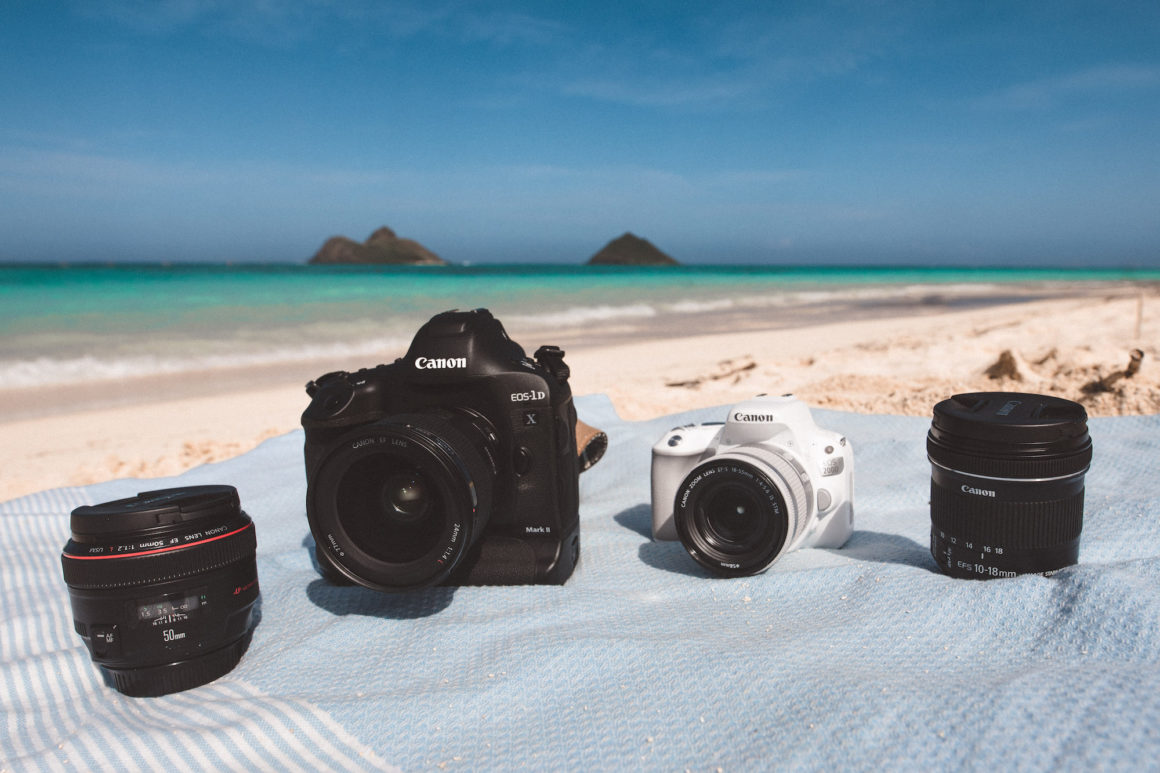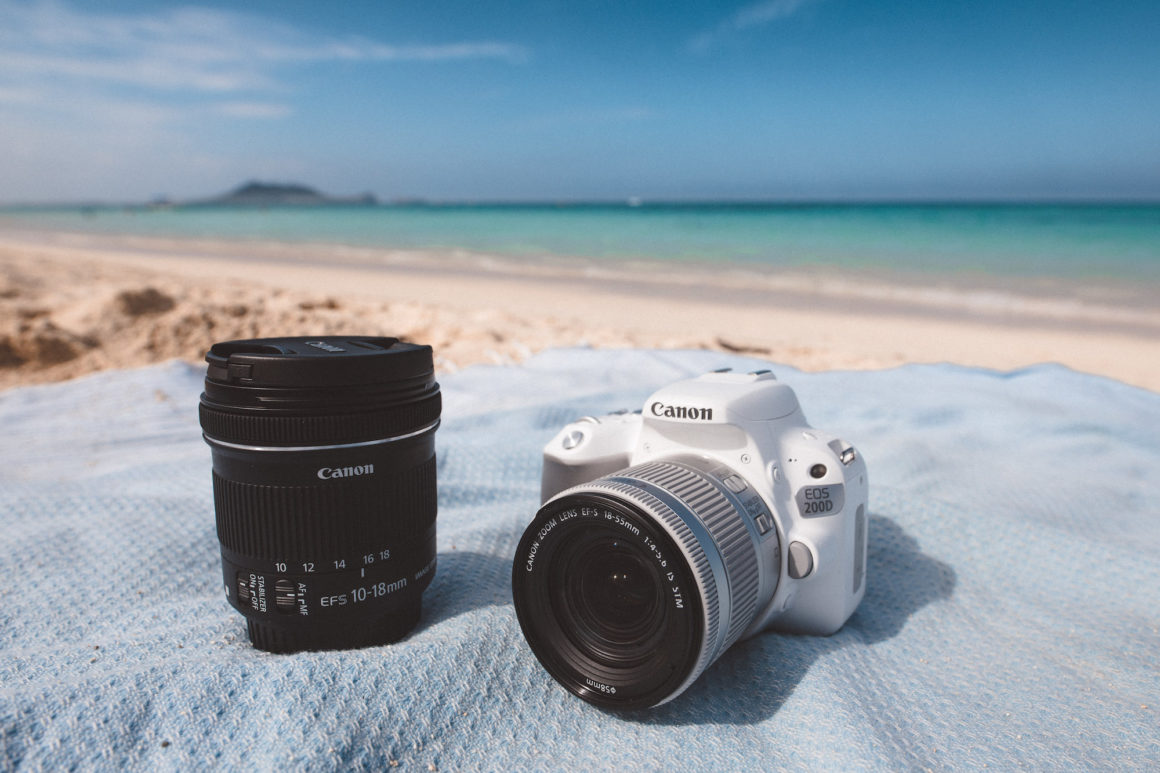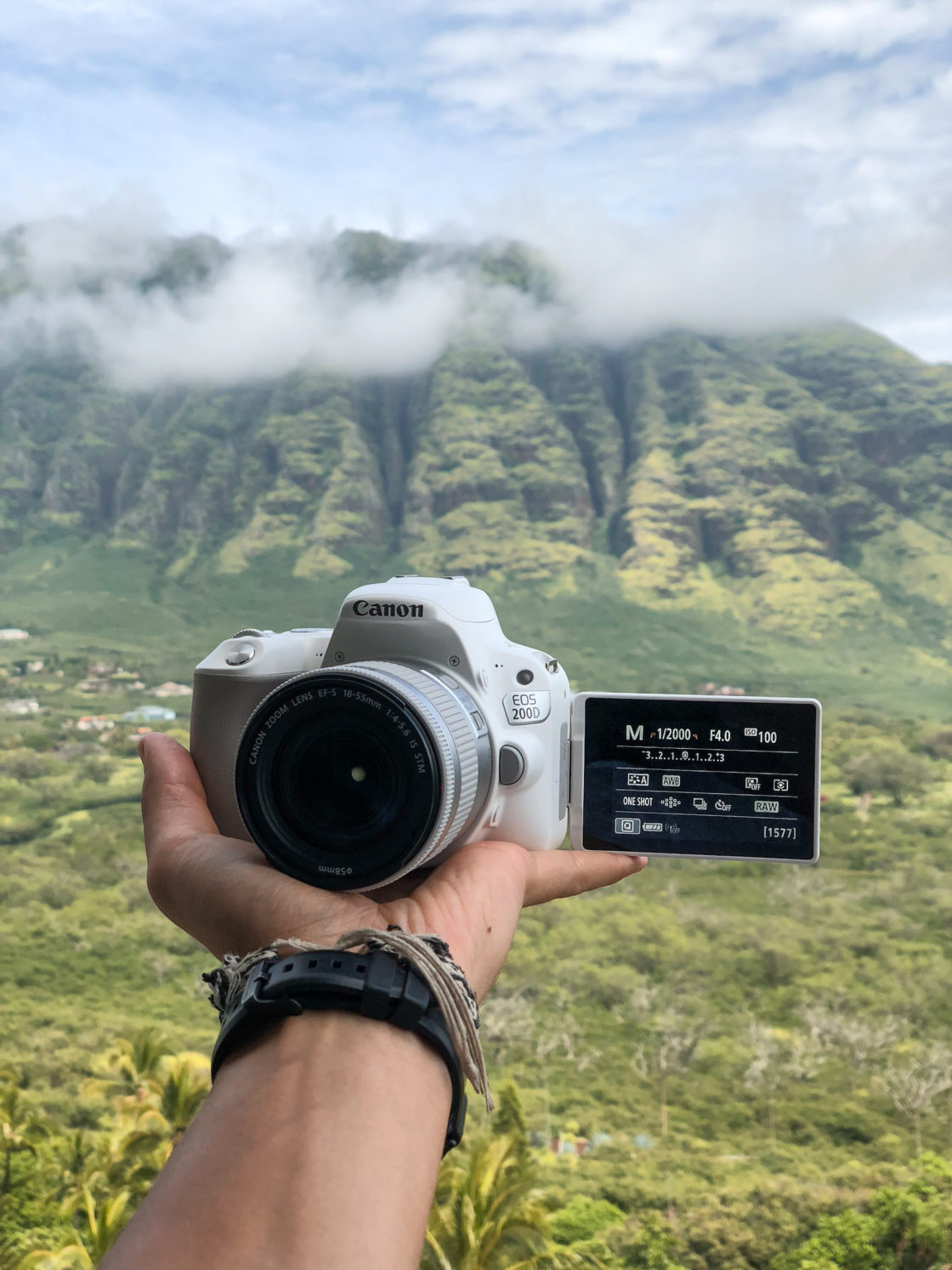Hey guys,
today it’s me, Kev, the guy behind the camera 😉 writing my first Blogpost for you here on debiflue.com! As so many of you have been asking which cameras and lenses we use for our shots we decided to finally publish a blogpost covering that topic – so here we go! Aaaand of course we‘ll announce the winner of our CAMERA & PRESETS GIVEAWAY at the end of this post 😉
heute melde ich mich mal bei euch, Kev – der Typ hinter der Kamera 😉 – und schreibe meinen ersten Blogpost auf debiflue.com für Euch! In den letzten Wochen und Monaten haben uns super viele Anfragen zu unserer Kameraausrüstung erreicht, daher haben wir uns endlich dazu entschieden einen Post über dieses Thema zu verfassen – also, los geht’s! Uuund ja, natürlich wird am Ende des Posts der Gewinner unseres KAMERA & PRESETS GIVEAWAYs bekannt gegeben 😉
So, let’s start with the beginning: we are and always have been using Canon. Why? That’s simple: the first camera we ever bought was a Canon and we were so happy with it that we decided to stick with Canon – until today. Over the last years we tried various models from different price ranges but we ended up using two of them regularly:
Fangen wir ganz vorne an: wir shooten all unsere Bilder mit Canon Kameras, haben wir schon immer. Wieso? Das ist einfach: Die 1. Kamera, die wir je hatten, war eine Canon und wir waren so happy damit, das wir bei Canon geblieben sind – bis heute. In den letzten Jahren haben wir mehrere Kamera Modelle aus verschiedenen Preisklassen genutzt. Aber diese 2 benutzen wir bis heute regelmäßig:
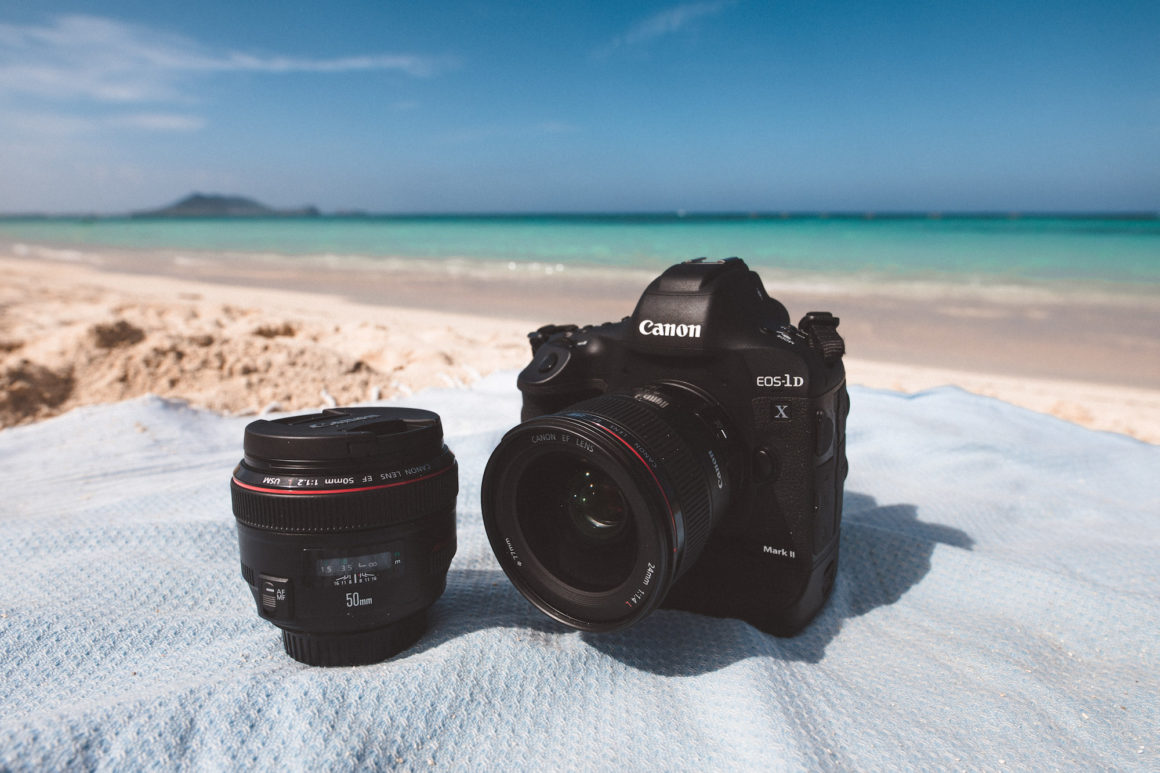
Both cameras are DSLR cameras with similar fundamental functionality and changeable lenses – but the 1DX is the one we are using the most, especially when shooting for clients. It is the biggest, heaviest and most advanced Canon DSLR u can get. As it is so big, heavy and sometimes a little unhandy to carry it around at beaches or hikes we are always taking the 200D on our trips as well, which is way smaller, lighter and more than handy – and the most important thing: both cameras are taking incredibly beautiful shots.
Beide Kameras sind Spiegelreflexkameras mit grundsätzlich ähnlicher Funktionsweise und wechselbaren Objektiven – allerdings ist die 1DX die Kamera die wir häufiger nutzen, besonders wenn es um Shooting für Kunden geht. Sie ist definitiv die fortschrittlichste, größte und schwerste (!) Spiegelreflexkamera, die man bei Canon bekommen kann. Gerade weil sie so groß, schwer und manchmal doch etwas unhandlich ist, nehmen wir immer auch die Canon EOS 200D mit auf unsere Reisen, da sie am Strand, beim hiken und generell spontanen Fotos einfach deutlich praktischer ist – und das Wichtigste: Beide Kameras machen unglaublich gute Bilder!


In terms of photography the main difference between those two DSLRs is the sensor. The 1DX is a full frame DSLR whereas the 200D comes with an APS-C sensor (which is smaller). What does that mean? In short: full frame DSLRs are stronger at lowlight shots and are able to capture more details. Because of that difference you can not use the same lenses for both camera types. Canon Lenses for full frame DSLRs include the letters “EF”, lenses for APS-C DSLRs include “EF-S” in their name – just keep that in mind when looking for a new lens 😉
So, let’s talk about lenses then! Usually we are travelling with the following four lenses (2 per camera):
Der technische Hauptunterschied der beiden Kameras ist der Sensor. Die 1DX ist eine Voll-Format Kamera wohingegen die 200D einen APS-C Sensor hat (kleiner als Voll-Format). Was heißt das? Kurz: Voll-Format Kameras sind stärker bei schwachem Licht und können mehr Details festhalten. Dieser Unterschied führt dazu, dass man die Objektive des einen Kamera-Typs, nicht mit dem anderen nutzen kann. Canon Objektive für Voll-Formate enthalten das Kürzel “EF” und Objektive für APS-C Modelle das Kürzle “EF-S” – das ist wichtig zu wissen, falls ihr Euch nach einem neuen Objektiv für Eure Canon Cam umschauen solltet 😉
Also, jetzt aber zu unseren Objektiven! Gewöhnlich reisen wir mit folgenden vier Objektiven (2 pro Kamera):
- Canon EF 24mm f1.4 (for 1DX, full frame)
- Canon EF-S 18-55mm f.4-5.6 (for 200D, APS-C)
- Canon EF-S 10-18mm f.4.5 (for 200D, APS-C)
- Canon EF 50mm f1.2 (for 1DX, full frame)
When do we use which lens? We are usually using small focal length lenses because we always try to catch the landscape and atmosphere around us as well. So for most of our shots we are using the following lenses:
Wann nutzen wir welches Objektiv? In den meisten Fällen nutzen wir Objektive mit einer geringen Brennweite, da wir immer auch die Landschaft und Atmosphäre um uns herum einfangen zu können. Für die meisten Shots nutzen wir also folgende Objektive:
- Canon EF 24mm f1.4 (for 1DX, full frame)
- Canon EF-S 18-55mm f.4-5.6 (for 200D, APS-C)


All example shots are unedited and taken from the exact same position. As you can see the the 2 pics are almost identical at 18mm (200D) and 24mm (1DX). You can get the view even wider with the following lens which we are using for narrow shots, when we are for example sitting very close to each other like in a car or plane:
Alle Beispiel-Bilder sind unbearbeitet und aus der exakt gleichen Position geschossen. Das 24mm (1DX) und das 18mm (200D) sind, wie hier zu sehen, so gut wie identisch. Mit dem folgendem Objektiv kann der Bildausschnitt noch einmal vergrößert werden Wir nutzen es zum Beispiel für Bilder an Orten, an denen eigentlich nicht viel Platz zum Fotografieren ist – super für Aufnahmen im Auto oder im Flugzeug:
- Canon EF-S 10-18mm f.4.5 (for 200D, APS-C)

When talking about focal length the EF-S 18-55mm f4-5.6 (for 200D, APS-C) is a pretty good allrounder as it covers a huge range and you don’t need to change lenses in order to change the focal length. Whenever we need to show details in for example fashion shots we change to a larger focal length which makes the background more blurry in order to put certain parts into focus with the following lenses:
Das EF-S 18-55mm f4-5.6 (für die 200D, APS-C) ist ein sehr guter Allrounder wenn es um Brennweite geht, da es einen großen Beriech abdeckt und das Objektiv nicht gewechselt werden muss, wenn wir eine andere Brennweite brauchen. Immer wenn es um Details oder Fashion geht wechseln wir gern zu einer größeren Brennweite, um bestimmte Bereiche eines Bildes in den Fokus zu rücken und zum Beispiel den Hintergrund unscharf werden zu lassen. Dafür nutzen wir folgende Objektive:
- Canon EF 50mm f1.2 (for 1DX, full frame)
- Canon EF-S 18-55mm f.4-5.6 (for 200D, APS-C)


The other important aspect when talking about lenses is the aperture. First: you use it to control the brightness of your pic. The smaller the number behind the “f” the larger the aperture and the more light gets into the camera. So for low light pics this is very important. Second: you can use it to adjust the blurriness of the background. A large aperture blurs the background stronger than a small one, see here:
Der andere wichtige Aspekt, wenn es um Objektive geht ist die Blende. Erstens: damit kann der Lichteinfall und damit die Helligkeit des Bilder kontrolliert werden. Je kleiner die Zahl hinter dem “f”, desto größer die Blende. und desto mehr Licht wird aufgenommen – sehr wichtig für Bilder bei wenig Licht. Zweitens: Über die Blende kann die Tiefenschärfe ebenfalls verändert werden. Eine große Blende lässt den Hintergrund eines Bildes verschwommener wirken, als eine Kleine:


Summing it up: the Canon EOS 1DX mark II is an absolute beast for professional photographers & videographers in all situations. The Canon EOS 200D is the perfect and affordable choice for everyday life & travel shots. Especially for beginners or intermediates as it comes with the option to activate a build-in guide explaining all the photography settings and functions (like aperture, shutter, ISO, etc.) while using it – DSLR made simple… and last but not least: The 200D comes with a foldable display (Selfie-Mode 😉 )!
Zusammengefasst: Die Canon EOS 1DX mark II ist ein absolutes Monster für professionelle Foto- und Videographen in jeder Situation. Die Canon EOS 200D is die perfekte und erschwingliche Wahl für den Alltagsgebrauch und spontane Reiseshots – gerade für Anfänger oder auch Fortgeschrittene, da es einen integrierten “Guide” gibt, der jede wichtige Kamera-Funktion (wie Blende, Belichtungszeit, ISO, etc.) gleich beim benutzen erklärt – Spiegelreflexkameras einfach gemacht… und last but not least: Die 200D hat ein klappbares Display (Selfie Mode 😉 )!
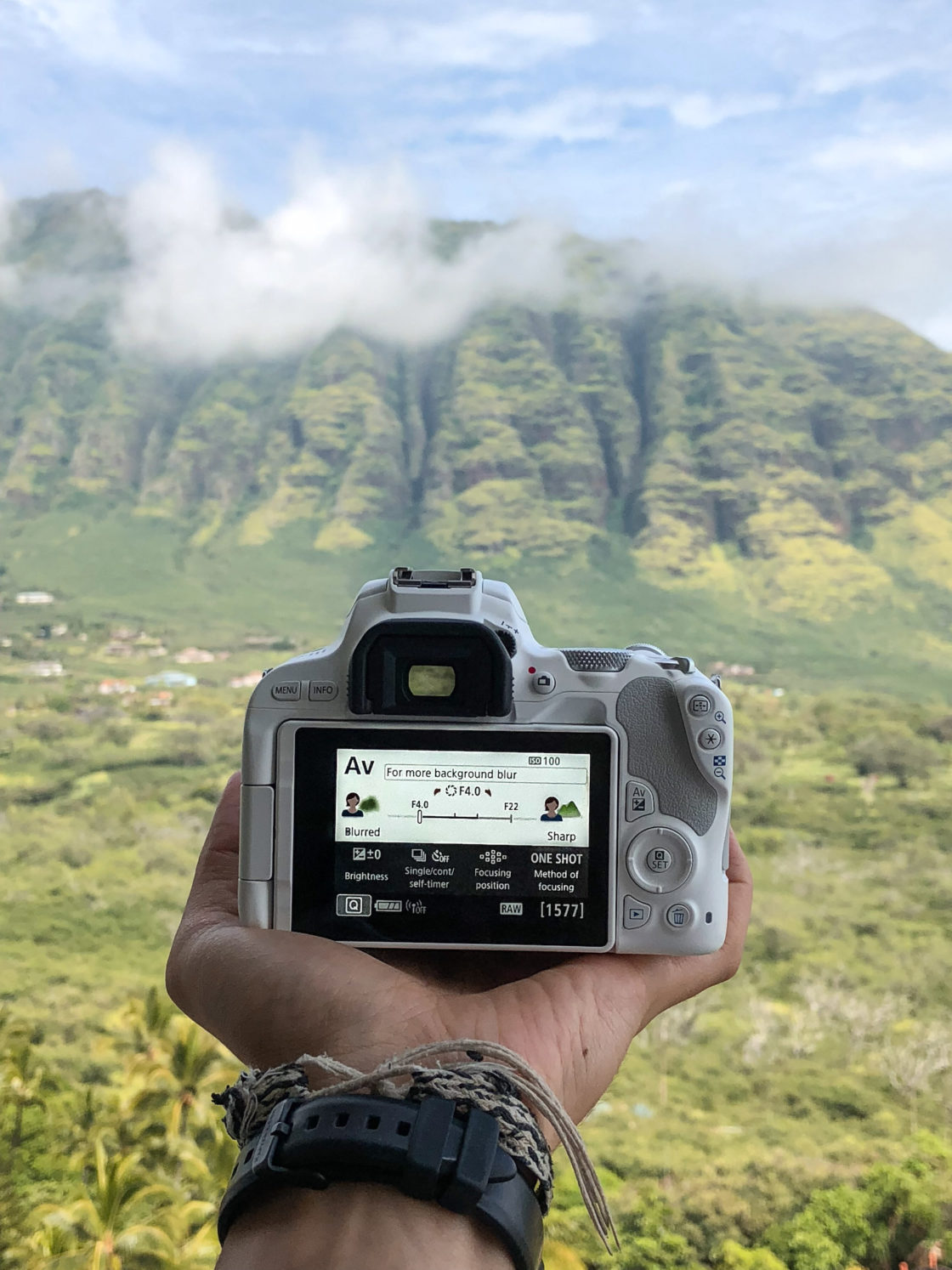

I know that this was a lot to read and a lot of information in just one post so feel free to ask whatever you wanna know in the comments below! And I am looking forward to hear your feedback 🙂
Ich weiß, das war einiges zu Lesen und viele Informationen für nur einem Post. Falls also noch Fragen offen sein sollten, stellt sie mir gerne in den Kommentaren. Ich freue mich über euer Feedback 🙂
But nooow it’s time to announce
THE WINNER
of our @canondeutschland X @presetsbydebifluekeeevsch giveaway!
(using a random comment picker)
…
LENA KURSCHAT
@lenakurschat
Congrats! 🙂
Please send an email to hello@debiflue-keeevsch.com
in collaboration with @canondeutschland


